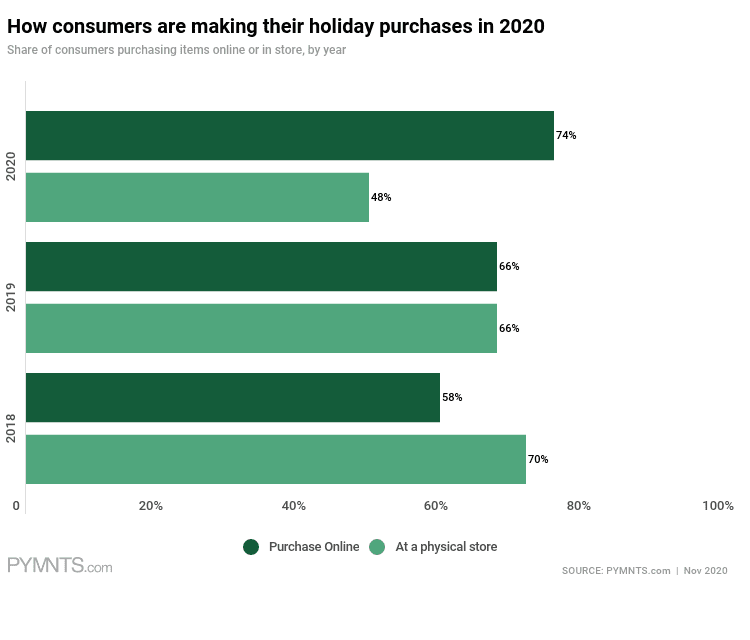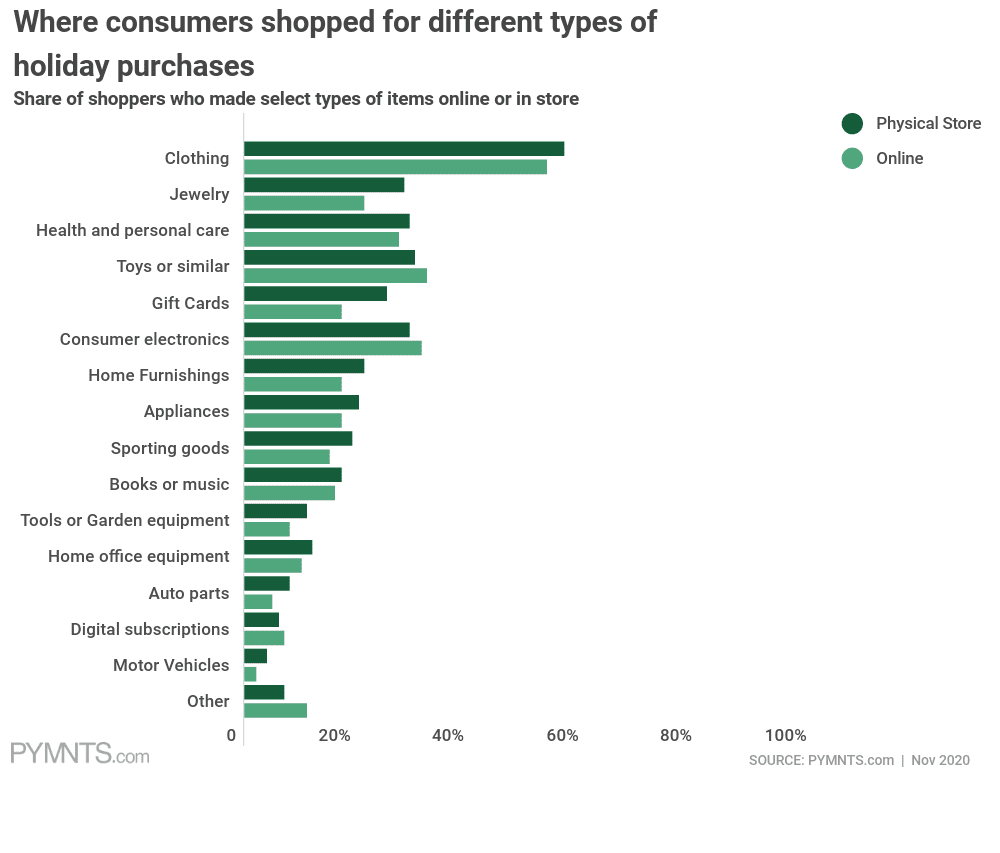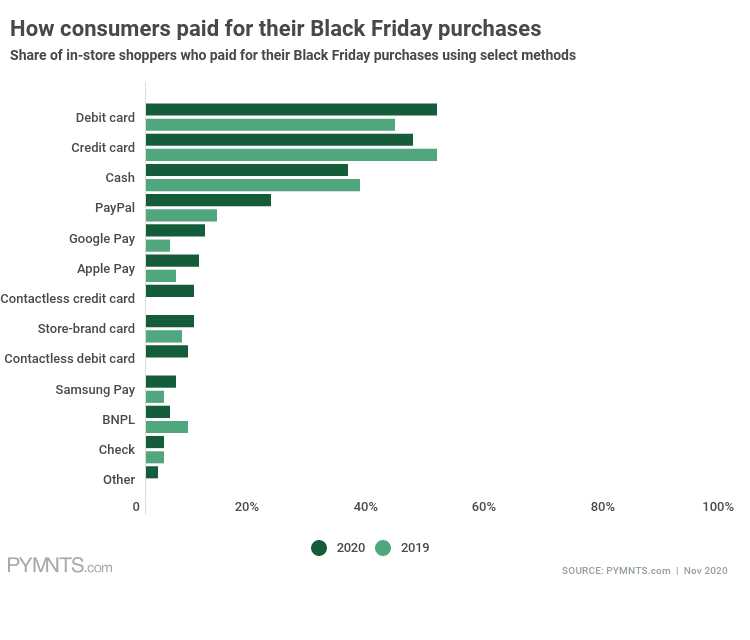Black Friday 2020: Fresh Data Tells A Tale Of Immense Retail Transitions

Of the many data-based insights contained in the new Black Friday 2020 Report: Crossing the Digital-Physical Shopping Divide, one line captures the mood of this just-concluded commerce holiday weekend: “Concerns over COVID-19 were present, but were secondary to consumers who craved convenience.”
That’s one way of summing up the new PYMNTS research based on a census-balanced panel of nearly 2,200 U.S. consumers taken on Saturday (Nov. 28), as Black Friday sales were raging.
And rage they did, with digital sales blowing past storefront and mall retail. Digital selling on Black Friday hit $9 billion according to Adobe, up 22 percent over Black Friday 2019, although sales missed Adobe’s Black Friday forecasts of just over $10 billion.
The new survey confirms a trend that’s been building for at least two years, which was greatly accelerated by the COVID-19 pandemic and its icy effect on physical retail. PYMNTS found that three in 10 people shopped exclusively online for Black Friday deals, and that “74.1 percent of holiday shoppers bought or plan to buy their holiday purchases online in 2020, representing a 12.7 percent increase from the share who did so in 2019.”
Digital-first Black Friday shopping was up 27 percent over Black Friday in 2018, “demonstrating the continuation of a much longer and broader transition that has been driving more consumers to shop online with each passing year.”
Underscoring the trend is the fact that “only 15 percent of all consumers who kicked off the holiday shopping season this Black Friday shopped exclusively in stores, a 25.7 percent decrease in the share of consumers who made their Black Friday purchases at a physical store in 2019 and a 41.4 percent decrease in the share who did so in 2018,” per the new report.
 Convenience or COVID?
Convenience or COVID?
Convenience commingled with COVID this year to create the perfect conditions for shifting purchases to digital or omnichannel journeys, with few of them ending inside a store.
According to the Black Friday 2020 Report, “consumers who planned to do some of their holiday shopping online this year said they did so primarily because shopping online was easier and more convenient than shopping in stores. Our research showed that 67.6 percent of all holiday eCommerce shoppers used online channels for this reason, compared to 47.4 percent who cited the fear of COVID-19 infection as their reason.”
Despite the growing digital-first footing and the downward curve of in-store selling on Black Fridays of the recent past, PYMNTS researchers found that last Friday, “56 percent of Black Friday clothing purchases were made in-store this year, while 53 percent were made online, for example.” Ditto for health and beauty products, suggesting that “consumers generally saw online purchasing as a viable substitute for brick-and-mortar shopping,” with few exceptions.
 The Payments Choice Factor
The Payments Choice Factor
As for the tantalizing topic of payment types, Black Friday 2020 was decidedly debit.
Per the Black Friday 2020 Report, “debit cards surpassed credit cards as the most common method in-store shoppers used to pay for their Black Friday purchases … with 48.6 percent using them to pay in physical stores this season — up 15 percent from 2019. This compares to 45.1 percent of Black Friday eCommerce shoppers who paid via credit card.”
Debit was used for more in-store purchases as well, “but it was still less commonly used than credit cards. Our survey shows that 39.7 percent of Black Friday shoppers who made at least one holiday purchase online this season did so using their debit cards, up 7.3 percent from last year. This compares to 54.3 percent who paid using credit cards this year.”
Other spending news from Black Friday 2020 has to do with alternative credit — aka “buy now, pay later” (BNPL) — and, at long last, the emergence of mobile wallets as a payments force.
“More than twice as many Black Friday shoppers paid for their in-store purchases using Google Pay in 2020 than they did in 2019, and 14 percent more paid for their online purchases via PayPal than last year,” per the report. “This worked out to 5.5 million (9.7 percent) of all in-store Black Friday shoppers paying via Google Pay and 25.1 million (28.5 percent) of all online Black Friday shoppers paying via PayPal.”
Meanwhile, BNPL climbed closer to the top tier of payment methods.

Read More On Black Friday:
- National Retail Federation Reports Higher Sales as Holiday Season Kicks Off
- Holiday Shoppers May Pull Back Spending Despite Strong Black Friday
- 5 Ways Consumers Choose to Pay This Holiday Season
- Retailers Raise Annual Forecasts After Strong Black Friday Sales
